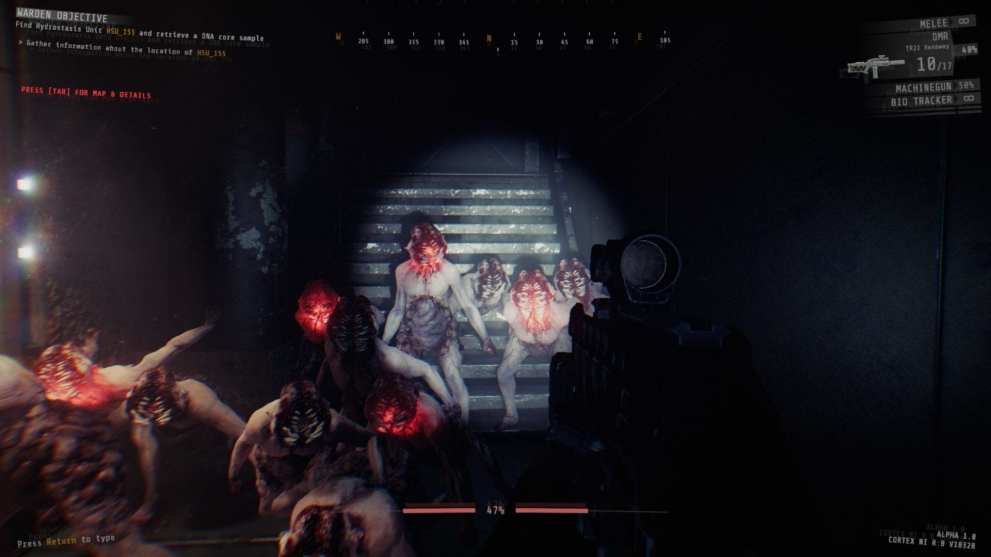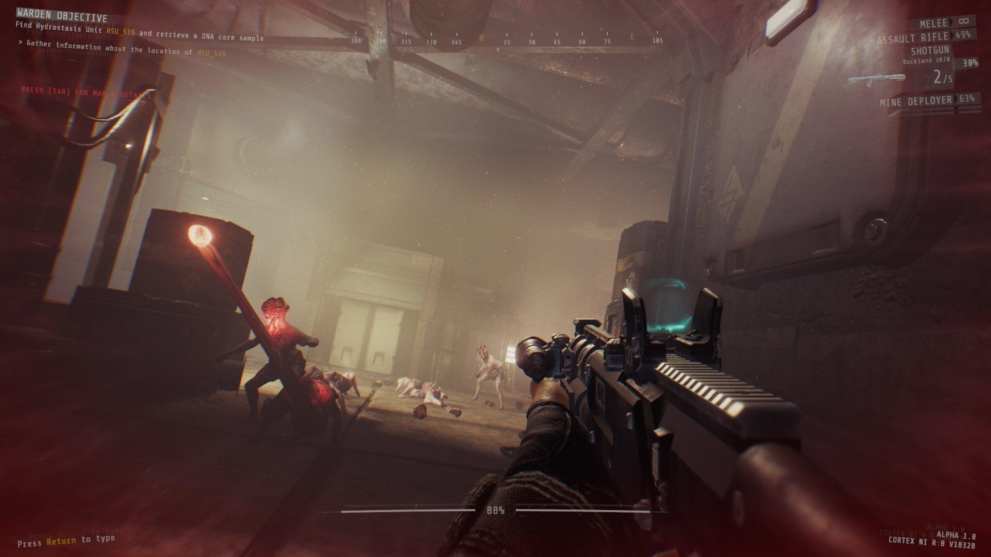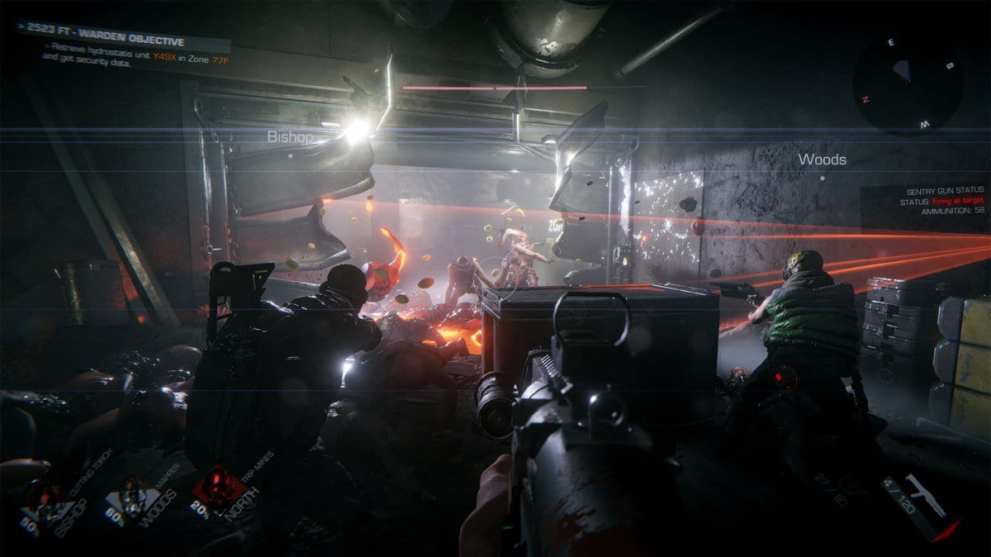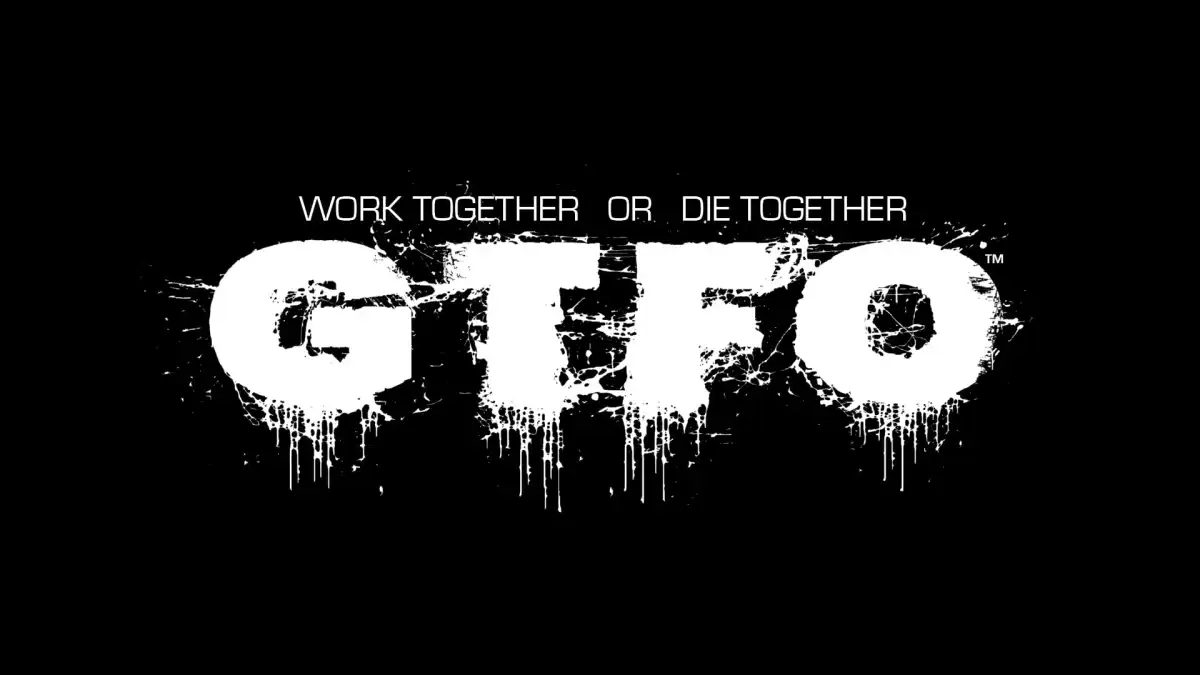Unity’s Copenhagen office is a massive facility, but the entrance is pretty inconspicuous. If I hadn’t spotted two other people looking similarly lost, I think I would have missed it completely.
And then there was the struggle to even get the door open: one of us calls upstairs (twice) while the other fumbles around with the keypad before I finally apply a bit of muscle and strong-arm our way in. We have a chuckle on the way up the stairs that our poor show of teamwork doesn’t bode well for a session of GTFO, the four-player co-operative survival horror game we’re here to preview.
It turns out we’re definitely not prepared. GTFO is even scarier and more challenging than I remember from my visit to 10 Chambers Collective’s E3 booth 18 months ago. The Complex in which each “Expedition” takes place is about 300 feet underground, mostly pitch black, often blanketed in thick fog, and crawling with nightmarish creatures hellbent on tearing us to shreds.

The easiest comparison to draw for those that haven’t heard of GTFO is with Left 4 Dead, although the team at 10 Chambers Collective are best known for their work on the Payday series. GTFO’s core gameplay loop certainly shares similarities with both of those multiplayer experiences, but it’s one that demands even more co-ordination and strategy between squad members.
10 Chambers proudly touts GTFO as an experience for “hardcore gamers,” and two minutes into our first play session I’m reminded that isn’t just marketing spiel.
After carefully selecting our loadouts and descending down into the Complex’s depths, it’s just a minute or so before one my squadmates picks up a cluster of hostiles on his motion tracker, and only seconds after that we’ve been forced into frantic combat. We’ve gone from full health and ammo to half measures of both in a flash.
Luckily, we’ve got two 10 Chambers veterans on our team and they do a good job reminding us that while GTFO’s alien creatures don’t have eyes, they use a sonar pulse to determine our location. Every time their chests flash red we’ve got to remain absolutely still, and if they start to get irritated it means they’re actively looking for us.
In the Complex’s dark, claustrophobic corridors, things can get heavy very quickly, and even when you think you have a game plan you can find yourself quickly overwhelmed. Staying stealthy whenever possible is the order of the day.

Our Expedition into the abyss tasks us with looking for ID tags, and so the first port of call is to find a computer terminal and manually punch in specific commands that help us zero in on their whereabouts.
Here’s where one of GTFO’s key mechanics comes into play; operating computers, doors, and terminals are much more involved than just pressing the interact button. After I’ve found a terminal, a squadmate calls out our Zone number as 21, which is written on a nearby wall, so I have to punch in “LIST ZONE_21 ID” to bring up a list of everything in the area. I can also “PING” specific items we’re looking for to illuminate its position to others.
As we work our way through the Complex, there’s an ebb and flow to each Expedition that sees combat fall roughly into two different types of encounters: sneaking our way into areas already full of creatures that we try to deal with silently, and then opening large doors to new areas that require us to huddle together within an illuminated circle to pass a security check, the sound of which means fending off a wave of creatures attracted to the noise.
Throughout both, we’re near constantly talking over the microphones and plotting each movement or kill as precisely as possible. Stealth takedowns of multiple creatures require one of us to provide a countdown over the microphone (which goes wrong on more than a few occasions), and clearing security is all about efficiently placing sentry towers in choke points to create kill zones. I particularly enjoyed using the non-lethal foam launcher to slow on-rushing creatures while my buddies mowed them down.
Everything about GTFO’s design encourages communication and teamwork. In a LAN environment like our preview session, that works pretty smoothly, but I’ll be interested to see how it pans out online, and when players are thrust into sessions with strangers.
Especially with the ever-present threat of aliens being alerted by sudden movements or the time-sensitive nature of ticking off various objectives, GTFO does push quite a bit onto players straight away. It took me a while to get into the groove of the game in a local environment and with the developers that built the game right beside me. How will newbies fair with punching in terminal codes under the instructions of veteran strangers?
The lack of hand-holding and general oppressiveness of the experience will be a big part of the appeal to the “hardcore,” of course, and I get that, but it’s also likely to limit GTFO’s accessibility. I do wonder about its ability to nurture a sizable community moving forward, though. I can see the potential for play sessions to be frustrated by griefers, or even just for veteran players to be irritated by newcomers.

A 1.3% survival rate for the 640,000 players running Expeditions during the recent alpha session is perhaps somewhat indicative of how concentrated each squad has to be for success in GTFO.
It’s too early to know whether any of my concerns will even prove an issue, but with no matchmaking system in place or option to boot griefers in the Early Access period that kicks off today, we’ll soon find out.
It’ll also be a chance to check out “The Rundown” gameplay mechanic for the first time, a system designed to dynamically rotate in-game objectives via a countdown timer. If it’s well-received, the idea is to use The Rundown to compel the game’s community to focus on a common set of Expeditions moving into GTFO’s full release.
10 Chambers’ Simon Viklund tells me that the team has all sorts of other interesting ideas they’re toying with, too, including expanding the lore and backstory of GTFOs setting, as well as possibly introducing progression systems.
How ambitious the game’s scope gets beyond its already accomplished core gameplay loop will depend on the success of Early Access. 10 Chambers will presumably be tweaking the game over the next few months and experimenting with what does and doesn’t work, as well as all the usual stress-testing and bug fixing.
From what I played, GTFO already runs pretty smoothly from a technical perspective. The graphics are much improved from my time with it at E3 2018, and I didn’t encounter any major issues with its frame rate and stability.
We did, however, encounter a bug that halted our progress in a play session of an experimental new mode that had us defending a reactor from waves of aliens, but that was almost to be expected given that it’s very much in a testing phase.
Early Access should feature all the content I played during the preview –the two standard Expeditions, and the wave mode. Hopefully, 10 Chambers’ method of procedurally generating maps and then curating them by making small tweaks should mean a steady flow of new content moving forward, too.
Indeed, the developer’s ability to maintain steady support of GTFO will ultimately be crucial to its success as an Early Access product, even if it’s already a package worth the cost of entry for me.
If you’re interested in jumping on board with GTFO’s Early Access then head over to its Steam Page.
You can check out a recording of one of our play sessions from the GTFO preview event below.













Updated: Dec 10, 2019 06:21 pm